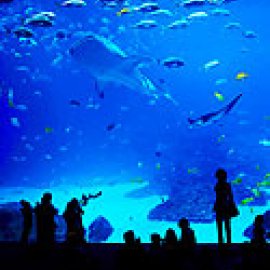How to Understand the Ocean in the 21st Century
-
English
-
ListenPause
[intro music, ocean sounds]
Welcome to World Ocean Radio…
I’m Peter Neill, Director of the World Ocean Literacy.
The articulation of “ocean literacy” as a pedological context for classroom instruction was the outcome of a 2005 online workshop of some 100 marine science and senior educators that resulted in the development of a “framework” for instruction in classrooms grades K through 12. It was put forward as a campaign, a statement of principles and recommendations to inspire teachers and administrators in the United States and internationally to inject through educator advocacy into traditional curricula that did not then promote the ocean as a global natural system that transcended conventional science, to include historical, political, and social engagement very much pertaining to the world around us. It was the first expression of the ocean as central focus for climate, water, food, health, exploration, trade, war, governance, community and national development, and cultural traditions. It was an earnest movement, de-centralized, resisted by convention, and persisted through the passion of a small group of educators worldwide.
Today, some two decades later, having been incorporated into the agenda of the UN Intergovernmental Oceanographic Commission, and following a declaration of renewed intent, as reported in a recent edition of World Ocean Radio, ocean literacy rides a new, vigorous, and welcome wave of interest and possibility. In the context of the moment, then, it seems important to describe the foundation assumptions that underlie the matrix of ideas developed 20 years ago. To understand, and move forward, one must accept these truths:
• That the earth has a single ocean with many unique, compelling facts and features;
• That the ocean is the dominant physical feature on our planet Earth—covering approximately 70% of the planet’s surface. There is one ocean with many ocean basins, such as the North Pacific, South Pacific, North Atlantic, South Atlantic, Indian and Arctic;
• That throughout the ocean there is one interconnected circulation system powered by wind, tides, the force of the Earth’s rotation (Coriolis effect), the Sun, and water density differences, shaped by ocean basins and adjacent land masses that influence the path of circulation;
• That sea level is the average height of the ocean relative to the land, taking into account the differences caused by tides. Sea level changes as plate tectonics cause the volume of ocean basins and the height of the land to change, as ice caps on land melt or grow, and as sea water expands and contracts when ocean water warms and cools;
• That most of Earth’s water (97%) is in the ocean. Seawater has unique properties: saline, freezing point slightly lower than fresh water, density slightly higher, its electrical conductivity much higher, and slightly basic. The salt in seawater comes from eroding land, volcanic emissions, reactions at the seafloor, and atmospheric deposition;
• That the ocean is an integral part of the water cycle and is connected to all of the earth’s water reservoirs via evaporation and precipitation processes;
• That the ocean is connected to all major lakes, watersheds and waterways because all major watersheds on Earth drain to the ocean. Rivers and streams transport nutrients, salts, sediments and pollutants from watersheds to estuaries and to the ocean;
• And that although the ocean is large, it is finite and its resources are limited.From these, all else follows. The assumption is universal and simple, but the levels of manifestation are local, integrated, and complicated. More critically, the assumption defies conventional separation of natural phenomena into multiple academic disciplines: geography, geology, physics, chemistry, biology, anthropology, history, and art – all of which have been historically taught each independently of the other. Ocean literacy is subversive, immersive, perversive, and coercive. It makes waves. It makes sense.
To accept this new perspective is to change the way you see the world. And that change seems necessary if we are to adapt, mitigate, and invent our way forward in the conditions evident worldwide as consequence of climate change. The elders of us may resist, just as we are resisting the inevitable devolution of accepted premises and norms. But our children’s minds are still to be formed, and an introduction to a new literacy based on the universality of cause and effect that is our ocean world may well be their way to their future.
We will discuss these issues, and more, in future editions of World Ocean Radio.
WORLD OCEAN RADIO IS DISTRIBUTED BY THE PUBLIC RADIO EXCHANGE AND THE PACIFICA NETWORK, FOR USE BY COLLEGE AND COMMUNITY RADIO STATIONS WORLDWIDE. FIND US WHEREVER YOU LISTEN TO PODCASTS, AND AT WORLD OCEAN OBSERVATORY DOT ORG, WHERE THE FULL CATALOG OF MORE THAN 700 RADIO EPISODES IS SEARCHABLE BY THEME.
[outro music, ocean sounds]
It has been nearly twenty years since the Ocean Literacy Principles and Framework were first adopted by classroom educators to promote the ocean as a central focus for climate, water, food, health, exploration, science, and more. Today it has been incorporated into the agenda of the UN IOC; it seems Ocean Literacy is riding a new wave of interest and possibility. This week on World Ocean Radio we are laying out the basic tenets and truths of Ocean Literacy, describing the foundational assumptions that underlie the matrix, including the first principle: the earth is one big ocean with many features.
About World Ocean Radio
World Ocean Radio is a weekly series of five-minute audio essays available for syndicated use at no cost by college and community radio stations worldwide. Peter Neill, Director of the World Ocean Observatory and host of World Ocean Radio, provides coverage of a broad spectrum of ocean issues from science and education to advocacy and exemplary projects.
World Ocean Radio
14 Years, 700+ Episodes
Ocean is climate
Climate is ocean
The sea connects all things
- Login to post comments



